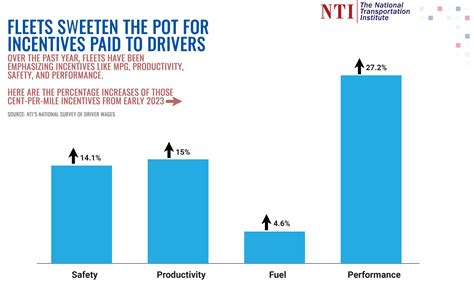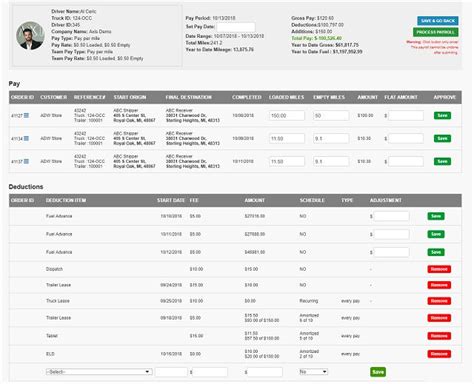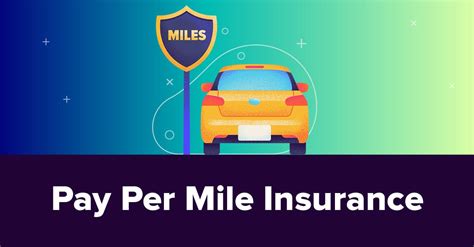Team Driver Pay Per Mile

In the dynamic world of logistics and transportation, understanding the intricacies of team driver pay structures is essential. This comprehensive guide delves into the concept of Team Driver Pay Per Mile, exploring the rates, factors influencing compensation, and the impact on the industry. With a focus on precision and industry insights, we aim to provide a detailed overview of this payment model, its advantages, and its implications for team drivers and the trucking industry as a whole.
Understanding Team Driver Pay Per Mile

Team driver pay per mile is a prevalent compensation model in the trucking industry, particularly for long-haul operations. This method ties a driver’s earnings directly to the distance traveled, offering a straightforward and often lucrative payment structure. It’s a crucial aspect of the industry, as it directly impacts driver motivation, retention, and overall operational costs.
The Basics of Per Mile Pay
Per mile pay, as the name suggests, calculates a driver’s earnings based on the number of miles traveled. It’s a simple yet effective formula: Mileage x Rate Per Mile = Earnings. For instance, if a team driver travels 500 miles with a rate of 0.50 per mile, their earnings for that segment would be 250. This rate can vary significantly based on factors we’ll explore later in this article.
Advantages of Per Mile Pay
This payment model offers several benefits. Firstly, it incentivizes drivers to focus on efficiency and productivity, as their earnings are directly tied to their performance. Secondly, it provides a level of transparency, allowing drivers to understand exactly how their pay is calculated. Finally, it can be more cost-effective for trucking companies, as they pay for actual work performed rather than a flat rate.
| Pros of Team Driver Pay Per Mile |
|---|
| Incentivizes Efficiency |
| Transparent Compensation |
| Cost-Effective for Companies |

Diving Deeper: Factors Influencing Team Driver Pay Rates

While the per mile pay model is straightforward, the actual rates can vary significantly. Several factors come into play, shaping the compensation structure for team drivers.
Market Demand and Competition
The market demand for trucking services is a key determinant of pay rates. In periods of high demand, rates tend to increase to attract more drivers. Conversely, in a saturated market, rates may drop. This dynamic ensures a balance between supply and demand, impacting team driver earnings.
Freight Type and Difficulty
The nature of the freight being transported also influences pay rates. Hazardous materials, specialized freight, or oversized loads often command higher rates due to the increased skill and responsibility required. Additionally, the difficulty of the route, including factors like road conditions and weather, can impact pay.
Experience and Skill Levels
Driver experience and skill set play a significant role in pay determination. More experienced drivers with specialized skills or endorsements often command higher rates. This factor not only recognizes the value of experience but also incentivizes drivers to continuously upskill and enhance their professional credentials.
Economic Conditions
The broader economic climate can impact team driver pay rates. During economic downturns, rates may be affected as companies look to cut costs. Conversely, a strong economy can lead to increased demand and, subsequently, higher pay rates.
| Factors Influencing Team Driver Pay Rates | Impact |
|---|---|
| Market Demand | High Demand = Higher Rates |
| Freight Type and Difficulty | Specialized Freight = Higher Rates |
| Experience and Skill Levels | Experienced Drivers = Higher Rates |
| Economic Conditions | Strong Economy = Increased Rates |
Performance-Based Incentives: A Twist to Per Mile Pay
While the per mile pay model is a standard, many companies implement performance-based incentives to further motivate drivers. These incentives can include bonuses for on-time deliveries, safe driving records, or meeting productivity targets. By adding these incentives, companies can enhance driver motivation and loyalty, leading to improved operational outcomes.
The Impact of Performance Incentives
Performance incentives have a dual impact. Firstly, they offer an additional financial incentive, providing drivers with the opportunity to earn more by excelling in their roles. Secondly, they foster a culture of excellence and safety, as drivers are encouraged to prioritize these aspects to maximize their earnings.
Case Study: A Successful Performance Incentive Program
Let’s take a look at a real-world example of a successful performance incentive program. XYZ Logistics, a leading trucking company, implemented a bonus structure for its team drivers. The program offered a 50 bonus for every clean safety inspection and an additional 100 for on-time deliveries without any delays. This program not only improved the company’s safety record but also led to a 15% increase in on-time deliveries, demonstrating the effectiveness of performance-based incentives.
The Future of Team Driver Pay: Trends and Predictions
As the trucking industry evolves, so too will the compensation models for team drivers. Here, we explore some emerging trends and make predictions for the future of team driver pay.
Embracing Technology for Efficiency
The integration of technology in trucking operations is set to revolutionize team driver pay. With advanced GPS systems, real-time tracking, and efficient routing algorithms, drivers can optimize their routes, leading to increased mileage and earnings. Additionally, technology can facilitate better communication between drivers and dispatchers, allowing for more accurate and timely pay calculations.
Focus on Driver Wellness and Satisfaction
In an increasingly competitive market, trucking companies are recognizing the importance of driver satisfaction. This shift is likely to impact pay structures, with companies offering more comprehensive benefits packages and improved compensation to attract and retain top talent. By prioritizing driver wellness and satisfaction, companies can foster a positive work environment, leading to improved productivity and reduced turnover rates.
The Rise of Sustainable Practices
As sustainability becomes a key focus across industries, the trucking sector is also adapting. With the introduction of eco-friendly trucks and optimized routes to reduce carbon emissions, we can expect pay structures to reflect these initiatives. Companies may offer incentives for drivers adopting sustainable practices, further encouraging a shift towards a greener industry.
Conclusion: Navigating the Team Driver Pay Landscape

Understanding the nuances of team driver pay per mile is crucial for both drivers and trucking companies. By aligning compensation with performance and market dynamics, the industry can ensure a motivated and skilled workforce. As we’ve explored, various factors influence pay rates, and by embracing emerging trends and technologies, the trucking industry can continue to evolve and thrive.
Stay tuned for more industry insights and updates as we continue to navigate the dynamic world of logistics and transportation. For drivers, understanding these nuances can empower decision-making, while for companies, it's a step towards strategic workforce management.
How often are team driver pay rates reviewed and adjusted?
+
Pay rates are typically reviewed annually, but some companies may adjust rates more frequently based on market conditions or internal performance metrics.
Are there any disadvantages to the per mile pay model for team drivers?
+
One potential drawback is that it may not fully compensate for the time and effort spent on non-driving tasks, such as loading and unloading or waiting times.
What are some best practices for team drivers to maximize their earnings under the per mile pay model?
+
Drivers can focus on efficiency, maintain a good safety record, and take advantage of performance-based incentives when offered. Additionally, staying updated with industry trends and market demands can help drivers negotiate better rates.


